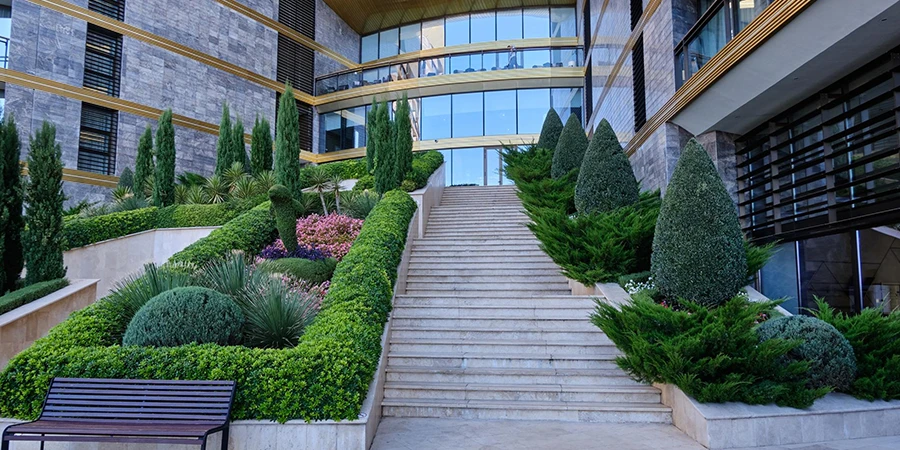When you’re building on a sloped block, one of the first major decisions you’ll face is what kind of retaining wall to install. The Sunshine Coast is full of properties where elevation changes, stormwater, and sandy soils are common, and so it’s crucial for you to make the right choice.
The two most popular options are concrete retaining walls and modular block retaining walls. Both have their place, but the best choice for your site depends on structure, style, and budget.
Here’s a clear breakdown to help you decide what’s best for your property.
Concrete Retaining Walls: Strength and Simplicity
Concrete walls are typically poured in place or constructed with concrete sleepers. They’re known for:
- Exceptional strength: suitable for high-load areas or supporting driveways
- Clean, modern lines: ideal for contemporary landscapes
- Long lifespan: when built properly, they can last 40+ years
- Low maintenance: resistant to pests, rot, and UV exposure
These are often poured in place and are ideal for heavy-duty applications. They’re known for strength, clean lines, and longevity.
Concrete systems are particularly well-suited to steep or high-grade slopes, where soil pressure and water flow are major concerns. Because of their structural capacity, poured systems are often required in engineered retaining systems.
The downside? They’re more expensive to install upfront, require more excavation, and usually need council approval or engineering beyond a certain height.
Block Retaining Walls: Flexibility and Style
Modular block walls (also called segmental retaining walls) use interlocking concrete blocks stacked to form a stable barrier. Their benefits include:
- Design flexibility: easy to build curves, steps, and tiers
- Attractive finishes: available in natural textures and colours
- Modular construction: allows for faster installation and easy repair
- Great for landscaping: particularly for garden beds, terraces, and feature walls
Block walls are usually dry-stacked with gravel backfill and good drainage — making them ideal for residential landscapes, especially where loads are lighter or the wall is under 1 metre in height.
There are also modern modular systems too, with prefab concrete lengths that load into vertical supports (which really makes them a hybrid system between concrete and block).
Modular block walls are popular for their flexibility and appearance. They work well for curved designs and are easier to repair or adjust.
They don’t always need formal approval if kept under specific heights, making them a good DIY or small-project option. However, for steep slopes or load-bearing situations, they still require professional planning and drainage design.
Which One’s Right for You?
Here’s a simple way to look at it:
- Choose concrete if you need high strength, a structural solution, or have a tight space with steep grading
- Choose block if your goal is visual appeal, curved design, or terraced landscaping on a more moderate slope
It depends on budget, design goals, drainage needs, and the slope grade. Concrete suits structural loads; blocks suit landscape styling.
Also consider:
- Budget: concrete is more expensive, but lasts longer
- Aesthetics: block walls offer more variety in texture and colour
- Drainage: both need proper drainage, but blocks allow easier water movement in some designs
- Height: taller walls often require engineering regardless of material
In another article I’ll share where timber retaining walls are the right option for your project.
Get the Right Wall for Your Slope
Choosing the wrong retaining wall for your site can lead to poor drainage, leaning, or costly failures. This is especially the case on Sunshine Coast blocks with tricky elevations.
Greener Landscaping designs and builds custom retaining walls for sloped properties, combining local knowledge with structural reliability. Whether you’re after clean lines or curved garden tiers, we’ll help you pick the right system for your space. Call us on 07 4120 7807.



